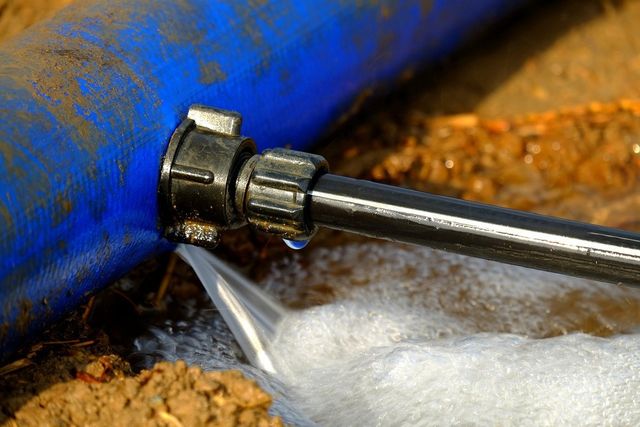Just how to Locate as well as Repair Work Water Leaks-- A Comprehensive Guide
Just how to Locate as well as Repair Work Water Leaks-- A Comprehensive Guide
Blog Article
This post following next relating to Top leak detection hacks is fairly engaging. Don't miss it.

Early detection of leaking water lines can minimize a prospective disaster. Some small water leaks might not be visible.
1. Check Out the Water Meter
Every residence has a water meter. Checking it is a proven manner in which aids you uncover leaks. For starters, shut off all the water sources. Make certain no one will purge, use the tap, shower, run the cleaning machine or dishwashing machine. From there, most likely to the meter as well as watch if it will certainly change. Considering that no one is utilizing it, there ought to be no activities. If it relocates, that suggests a fast-moving leakage. If you find no changes, wait a hr or two and inspect back once again. This suggests you may have a sluggish leakage that could also be underground.
2. Inspect Water Consumption
Analyze your water expenses as well as track your water intake. As the one paying it, you need to discover if there are any discrepancies. If you spot sudden changes, in spite of your intake being the same, it implies that you have leakages in your plumbing system. Remember, your water costs need to fall under the same variety each month. A sudden spike in your bill indicates a fast-moving leak.
On the other hand, a constant increase each month, despite the very same practices, reveals you have a slow-moving leakage that's additionally gradually intensifying. Call a plumber to completely examine your residential property, particularly if you really feel a warm location on your floor with piping beneath.
3. Do a Food Coloring Examination
30% comes from bathrooms when it comes to water intake. Test to see if they are running correctly. Drop specks of food shade in the container and also wait 10 mins. There's a leakage between the container as well as dish if the shade somehow infiltrates your dish throughout that time without flushing.
4. Asses Outside Lines
Don't forget to inspect your outdoor water lines as well. Needs to water permeate out of the link, you have a loosened rubber gasket. One little leakage can waste bunches of water as well as surge your water costs.
5. Evaluate the circumstance and examine
House owners ought to make it a routine to inspect under the sink counters as well as also inside cupboards for any type of bad odor or mold and mildew development. These 2 red flags suggest a leak so prompt attention is required. Doing routine evaluations, even bi-annually, can save you from a major problem.
Inspect for discolorations and also damaging as most devices and also pipes have a life expectancy. If you believe leaking water lines in your plumbing system, don't wait for it to rise.
Early discovery of dripping water lines can reduce a possible catastrophe. Some tiny water leaks may not be visible. Inspecting it is a guaranteed method that assists you uncover leaks. One small leak can waste heaps of water and also spike your water expense.
If you suspect dripping water lines in your plumbing system, don't wait for it to rise.
How to Know If Your Home Has a Hidden Leak
Water Meter Reveals Inexplicable Water Usage
If you’d like to test whether or not there’s a leak somewhere in your home, you can do this using your water meter. Here is how to conduct the test:
Don’t use any water in your home for at least 30 minutes; this also means not turning on faucets or water-using appliances.
Go outside, and check your water meter for activity.
If your water meter shows that there was activity, even though no one was using any water, this proves that there is a leak in your home.Visible Mold or Mildew Growth
Leaks behind walls create moist, dark environments that allow mold and mildew to grow and thrive. Eventually, you might see mold growth forming on the wall closest to a hidden leak.
If mold is growing in an area that receives a high amount of moisture, such as a bathroom, it may simply be an indication that better ventilation is needed. However, if you see mold growth on a wall or the ceiling in an area where you would not expect, you probably have a hidden leak.
Musty, Mildew Odor
Sometimes you might not be able to see the mold or mildew that is growing as a result of a leak. However, the smell can give the problem away just as easily. If you catch a whiff of something musty, there’s a good chance that old water is collecting somewhere in your home that you can’t see.
Stained/Warped Walls, Ceilings, or Floors
When your home soaks up water, a variety of red flags can become visible, including ceiling stains, bubbling drywall, warped walls, and sagging floors. While these issues can be caused by excess humidity, they can also be signs that a pipe or plumbing connection has started leaking behind your walls.
Inexplicably High Water Bill
After a while, you get a general sense for what your water bill should be. If you own a pool or sprinkler system, your bill will tend to be higher during summer. However, if you receive a water bill that seems especially high, and you can’t figure out what caused it, then you may have a hidden leak somewhere that’s increasing your bill.
https://www.plumbingjoint.com/blog/2019/july/how-to-know-if-your-home-has-a-hidden-leak/

I stumbled upon that piece on Locating water leaks while surfing the search engines. Enjoyed our content? Please share it. Help somebody else discover it. I am grateful for your time. Come back soon.
Report this page